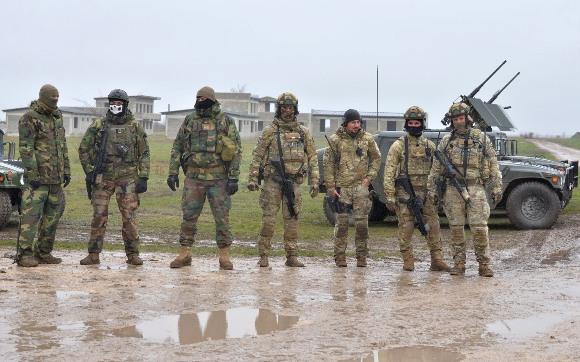In a previous episode of our series dedicated to the "armies of the Russo-Ukrainian War", we talked about the Armed and Security Forces of Transnistria (or more formally: the "Moldovan Republic of Pridnestrovia") and how there is a well-founded possibility that, as the conflict between Moscow and Kiev progresses, they could be drawn into the war. Today we will instead deal with the case of the Armed and Security Forces of Moldova (also known as the "Republic of Moldova") given that the Bessarabian nation has also been mentioned several times over the past year as a target at the center of the Kremlin's sights as much as the Ukraine.
Even if the military history of Moldova understood as a sovereign state is relatively recent, this does not mean that the people of the territory cannot boast a rich and often unknown warrior tradition.
Without going back to Ancient or Medieval History, it will suffice to recall that, in the last hundred years, a large number of Moldovan soldiers had the opportunity to serve during the Second World War both in the ranks of the Romanian army and in those of the Soviet army by paying in both cases a high blood toll. During the Cold War then, the Moldovan contribution to the military instrument of the Red Empire was robust and the native men of the socialist republic were able to distinguish themselves also in the Soviet War in Afghanistan.
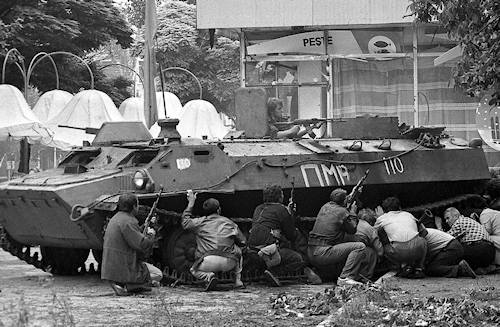 Moldova began the process that would lead it to separate from the Soviet Union as early as 1990, but it was only in December 1991 that, with the formal act of dissolution of the USSR, the country effectively became a member of the " international community". However, this event was not without consequences in geopolitical terms because, as early as November 1990, the central authorities of Chișinău had to deal with the revolt of the population inhabiting the Transnistria region, subsequently supported by Moscow in what, during the 1992, became a full-scale war, which ended in the military victory of the Transnistrian-Russian coalition and the creation of Transnistria as a de facto independent state.
Moldova began the process that would lead it to separate from the Soviet Union as early as 1990, but it was only in December 1991 that, with the formal act of dissolution of the USSR, the country effectively became a member of the " international community". However, this event was not without consequences in geopolitical terms because, as early as November 1990, the central authorities of Chișinău had to deal with the revolt of the population inhabiting the Transnistria region, subsequently supported by Moscow in what, during the 1992, became a full-scale war, which ended in the military victory of the Transnistrian-Russian coalition and the creation of Transnistria as a de facto independent state.
It was precisely during those events that the Armed Forces of Moldova saw the light and had their so-called "baptism of fire". On the basis of the agreements in force at that time between the ex-Soviet countries, Chișinău legally took control of all the Soviet military assets present on its territory and the final result of this appropriation process was that the country received a military force as a dowry for nothing contemptible. By way of example, it will suffice to recall that the Moldovans obtained control of all the Mig-29 aircraft belonging to the 86th regiment of theGuards Naval Aviation.
In any case, with independence, the economic situation of Moldova immediately began to degenerate with the GDP in free fall (according to World Bank data, in 2001 Moldova's economy had a size equal to 45% of what it had in 1991 , last year of the country's membership of the Soviet Union!) and large segments of the population forced to emigrate to survive (considering the secession of Transnistria, massive emigration and low total fertility rate, Moldova has gone from a population of 4.364.000 inhabitants at the time of independence to 2.597.100 in 2021, with a decrease of 41%!).

It was inevitable that in this context of complete economic and social collapse, the country was forced to drastically cut military spending also given the substantial compliance of the political-military elites with little interest in "unfreezing" the Transnistrian conflict for fear of incurring Moscow's wrath again .
The original reform plan of the early 12.000s called for the abolition of the Soviet legacy of compulsory conscription and the establishment of a force of 15.000-1991 men composed entirely of professionals in both long and short term contracts, but the prosaic reality forced the abandonment of this plan as well, so much so that, if one wanted to describe the evolution of Moldovan military issues from independence until today, one could say that the country's military instrument was simply left to perish, exactly as happened in Ukraine from 2014 to XNUMX.
Organizationally, the Moldovan Armed Forces today are structured around the land forces command and to Air Force Command.
As Moldova is a landlocked country, it does not have a Navy, however it does have a small river patrol force under the command of the land forces command. Analyzing the battle order we notice how the combat nucleus of the land forces command Moldavian is made up of 3 motorized infantry brigades organized according to the old Soviet model:
- the 1a motorized infantry brigade "Moldavia", based in Bălți;
- the 2a motorized infantry brigade "Stefan Cel Mare", based in Chișinău;
- the 3a motorized infantry brigade "Dacia", based in Cahul.
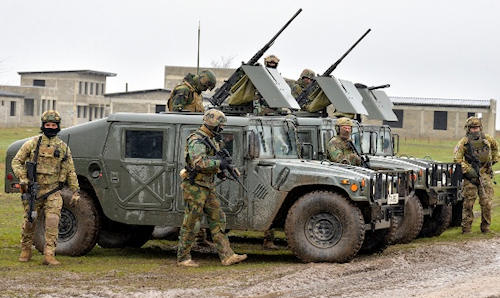 In addition to these 3 main maneuvering units, the land forces command employs an artillery division, several independent specialized units (engineers, NBC warfare, communications, etc...) and two elite units:
In addition to these 3 main maneuvering units, the land forces command employs an artillery division, several independent specialized units (engineers, NBC warfare, communications, etc...) and two elite units:
- the battalion of the Guard, stationed in Chișinău;
- the Independent Battalion of the “Fulger” Special Forces, stationed in Durlești, near Chișinău.
Over the years, Moldova has also set up 4 units of peacekeeping, both to man the contact line of the frozen Transnistrian conflict and to participate in UN-sanctioned peacekeeping missions:
- the 22nd Peacekeeping Battalion, in Chișinău;
- the 1st Independent Peacekeepers battalion, in Cocieri;
- the 3rd Independent Peacekeepers battalion, in Coșnița;
- the Independent Infantry Company of Peacekeepers, in Varnița.
From a strategic point of view, it is immediately noticeable that, although there is an attempt to guarantee security in the direction of all corners of the country, in any case most of the units are based in the capital or in its immediate vicinity and this makes almost impossible to carry out a "decapitating blow" that manages in a short time to neutralize the political leadership and the main decision-making centers of the country.
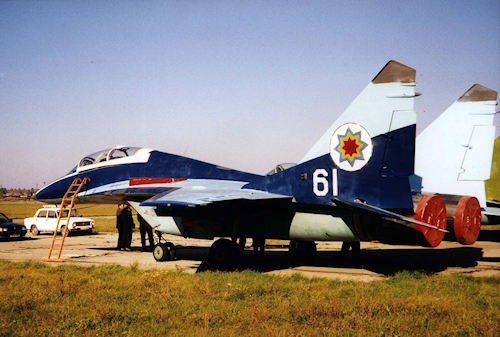
Following the drastic reduction of the workforce both in men and in means, the Air Force Command today it has under its control a single mixed air brigade headquartered in the "Decebal" air base (and which includes 8 Mil Mi-8 helicopters and 5 transport aircraft between Antonov An-2, Antonov An-26 and Antonov An-72; Moldova still has 6 surviving Mig-29s but they have not been able to fly for a long time) and the "Dimitrie Cantemir" anti-aircraft brigade equipped with SA-3 surface-to-air missiles in charge of the defense of the skies located above the capital.
Overall, the personnel of the Moldovan Armed Forces number less than 10.000 men including professionals and conscripts, bolstered if necessary by 70.000 reservists.
Be careful though! In Moldova the reservists are not a real power multiplier of the permanent component of the Armed Forces, as happens, for example, in Israel and in the Anglo-Saxon countries, but must be considered more as a sort of "additional reservoir of human resources" to be mobilized however over a long period of time, therefore with poor operational readiness. In this regard, the Moldovan law instead provides that in the event of a serious international crisis, the Armed Forces are immediately supported by the Security forces which are instead dependent on the Ministry of Internal Affairs in peacetime.
Le Security forces they are made up of the regular Police (heir of the Soviet-era Militsya, which also includes among its departments the famous "Fulger" Special Forces brigade, a unit that since 1991 has accumulated an enviable experience in the fight against high-level organized crime) and give it Carabinieri troops, a sort of gendarmerie which, as the name suggests, was organized on the model of the Italian carabinieri.
Lastly, the Border Police (actually a real military body) should be mentioned, heir to the old ones Border Troops of the KGB.
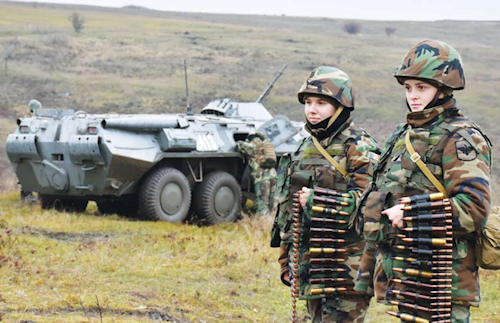
Both the Armed Forces and the Security forces can then be assisted by the very powerful SIS (acronym which stands for “Serviciul de Informații și Securitate” - “Security and Intelligence Service”) which, despite the name, is not a simple “intelligence agency” but, as in all post-Soviet countries is a real ministry which controls its own paramilitary and counter-terrorism forces on which, however, there is very little information given the extremely confidential nature of their missions.
A major weakness of Moldova's Armed and Security Forces is the severe shortage of firepower. From the point of view of the means, in fact, the country's military instrument is completely devoid of fundamental assets such as high-performance combat aircraft, UAV / UCAV and tanks. The "armored" component relies on a few dozen BMD-1, BRDM-2 and BTR of various generations.
Defense industries have over the years tried to keep the means competitive by carrying out limited updates, especially thanks to the assistance provided by Romania.
The artillery, quite robust if compared to the general dimensions of the ground troops, is however almost entirely of the "towed" type, with only a few self-propelled 2S9 Nona with 120mm muzzle and BM-27 Uragan rocket launcher still in service. The Moldavians have tried to compensate with alternative and ingenious solutions, for example by mounting AZP S-60 dual-use pieces with a 57 mm fire mouth on the back of ZiL-135 trucks, but this is very little. The Moldovans are so "hungry for means" that they have been forced (copying the Transnistrians) to fall back on the tactic of transforming a whole series of vehicles of military genius into infantry fighting vehicles such as the GT-MU, the IMR-2, the PTS-2 and the GMZ-3 inherited in important numbers from the ex-Soviet Armed Forces.
The only "modern" additions in recent years have been around twenty APCs Piranhas IIIH of Swiss origin, but supplied by Germany, and a hundred Humvee from the United States of America.
Ultimately, despite the optimistic predictions of some improvised analysts according to whom "thanks to the orography of Moldova it would be enough to equip the local forces with a small number of missiles Javelins to deter a Russian invasion”, it is necessary to frankly admit that, despite a not entirely negligible base of mobilization on paper, the Moldovans suffer from a dramatic disparity in firepower vis-à-vis their potential enemies such that, in the event 'Ukraine will one day be definitively overwhelmed by the Russians, they they would be in no way able to prevent their country from meeting the same fate.
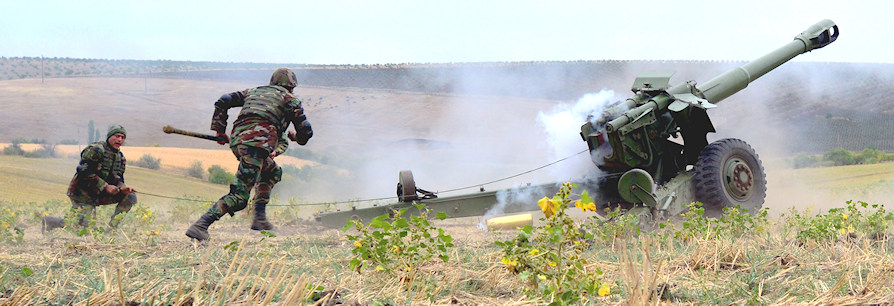
Photo: Ministerul Apărării / web / US Air Force / US Army National Guard

